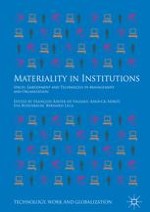2019 | OriginalPaper | Chapter
7. At the Intersection of Materiality, Organizational Legitimacy and Institutional Logics: A Study of Campus Tours
Authors : François-Xavier de Vaujany, Sara Winterstorm Varlander, Emmanuelle Vaast
Published in: Materiality in Institutions
Publisher: Springer International Publishing
Activate our intelligent search to find suitable subject content or patents.
Select sections of text to find matching patents with Artificial Intelligence. powered by
Select sections of text to find additional relevant content using AI-assisted search. powered by
